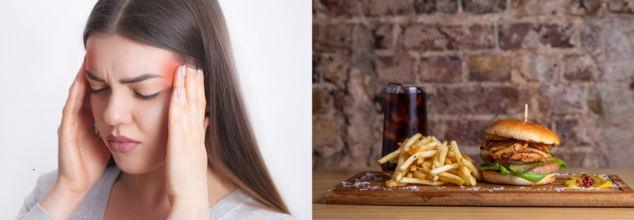- Health Conditions A-Z
- Health & Wellness
- Nutrition
- Fitness
- Health News
- Ayurveda
- Videos
- Medicine A-Z
- Parenting
- Web Stories
Want To Become Fitter And Leaner By Summer End? Nutritionist Shares What To Add, Skip And Swap

It’s mid-May. You’re scrolling through Instagram, and there it is—your friend’s beach photo from Greece, looking toned, glowing, and radiantly fit. You glance down at your own snack plate and suddenly feel that summer guilt sinking in. Sound familiar?
Many of us start the season with grand intentions- early morning workouts, clean eating, and a total body transformation by summer’s end. But between work deadlines, weekend plans, and rising heatwaves, those goals often slide down the priority list. As the sun climbs higher and days get longer, many of us feel the urge to hit reset on our wellness routines. But with endless workout trends and restrictive diets dominating social media, it’s easy to fall into unsustainable habits that do more harm than good.
You don’t need a total overhaul to feel and look your best by the end of the season. According to Sweta Himatsingka, a certified nutritionist, “Small, science-backed swaps—what you eat, how you move, when you rest—can make a massive difference when practiced consistently.” With a science-backed approach to build strength, lose fat, and feel more energized by the end of summer. In an exclusive conversation, she shares sustainable food and fitness swaps that are practical, effective, and rooted in current health research.
Here’s your no-fad guide to becoming fitter and leaner—without burning out.
Micro Workouts for Macro Gains
Forget the hour-long grind at the gym. According to a 2024 study published in the Journal of Sports Sciences, just 5–10 minutes of movement performed three times a day can significantly improve body composition and cardiovascular fitness.
“These short bursts, known as ‘exercise snacks,’ are incredibly effective,” explains Himatsingka. “Try doing resistance band squats while your coffee brews, stair sprints before your shower, or lunges between Zoom calls.”
The key is consistency. Over time, these micro-movements stimulate muscle activity, increase heart rate, and improve insulin sensitivity without the mental and physical fatigue of long workouts.
Don’t Just Count Protein, Time It
One of the biggest mistakes people make with their diet is concentrating all their protein intake at dinner. But recent research from The American Journal of Clinical Nutrition emphasizes that evenly distributing protein across meals enhances muscle protein synthesis.
“Think 20 to 30 grams of protein per meal,” suggests Himatsingka. “A protein-rich breakfast of Greek yogurt with seeds or a tofu scramble sets the tone for better metabolism and muscle retention throughout the day.”
Whether it’s lentils, eggs, nuts, or lean meats, strategic protein timing helps preserve muscle, boosts satiety, and keeps blood sugar stable essential for getting lean.
Feed Your Gut, Flatten Your Belly
When it comes to long-term leanness, fiber often gets overlooked. But a 2024 meta-analysis in Nutrients connects higher fiber intake to lower visceral fat and improved weight management.
“Fiber helps control cravings by keeping you full longer, especially when it comes from whole foods like vegetables, legumes, and grains,” Himatsingka notes. “It also supports gut health, which is key to better digestion and reduced inflammation.”
Instead of reaching for a mid-morning snack, load up on a colorful salad with chickpeas, seeds, and avocado. Not only will it satisfy your hunger, but it will also provide prebiotic fuel for your microbiome—a hidden powerhouse for weight regulation.
Strength is the Real Slimming Secret
“Cardio burns calories, but muscle burns fat—even when you’re not moving,” says Himatsingka.
According to a recent BMC Medicine study, higher muscle strength is linked to a 44% lower risk of developing Type 2 diabetes. It also promotes better posture, joint health, and metabolic rate.
You don’t need a fancy gym setup. “Two sessions of resistance training per week—using body weight, resistance bands, or even water bottles—is enough to preserve lean mass and improve tone,” she adds.
How Sleep and Stress Shape Your Body Better
You can’t out-train a tired body. A study in Sleep Health found that 7 to 9 hours of quality sleep significantly improves mood, strength recovery, and fat metabolism.
“Sleep is when the body repairs, hormones reset, and fat is burned efficiently,” says Himatsingka.
Equally important is managing stress. Chronic stress spikes cortisol levels, which can encourage belly fat storage. Breathwork, journaling, and spending time outdoors can all help regulate your nervous system.
One Small Supplement Advantage
Among the lesser-known yet effective fat-burning aids is effervescent L-Carnitine, a naturally occurring amino acid that ferries stored fat into cells to be used for energy.
“L-Carnitine helps accelerate fat burning while boosting energy—making it easier to stay active without crashing,” explains Himatsingka. “Its effervescent form ensures better absorption and faster effects.”
If you're already working out and eating well, this could be the edge that helps speed up results. However, she advises consulting a healthcare provider before starting any supplement regimen.
The road to becoming leaner and stronger doesn’t require dramatic overhauls. Instead, it’s about intentional tweaks: shorter workouts, smarter meals, deeper rest, and sustainable habits.
“Health is cumulative,” says Himatsingka. “Each better choice builds on the last. By the end of summer, you won’t just look different—you’ll feel transformed from within.” So this season, skip the shortcuts. Build a body that thrives through science, not struggle.
Sweta Himatsingka is a certified Nutritionist at Fast&Up India
Tropical Fruit Helps You 'Get A Good Night's Sleep' When Eaten Regularly

Insomnia and other sleeping disorders affect many people throughout the world. There are many factors that affect this, like poor mental health, suffering physical health, as well as poor diet choices. What you eat greatly affects your sleep. While we all know that drinks like coffee and tea, basically ones that contain caffeine, should not be consumed too much and at an appropriate time if you want restful sleep. However, what about foods that help our sleep better?
Studies have shown that some fruits have properties that support good sleep. One such fruit is pineapple. Due to its unique tart-sweet flavor, pineapple is a popular tropical fruit enjoyed worldwide in fruit salads and even on pizza. Beyond its taste, pineapple offers significant health benefits, being a good source of immunity-boosting vitamin C and digestion-supporting fiber. But surprisingly, it might also help you fall asleep.
How Does Pineapple Help Get Good Sleep?
One of the interesting things about pineapple is its potential to encourage the body to produce more melatonin. Melatonin is a natural hormone that many people take as a supplement to help them fall asleep. If you prefer natural ways to improve your sleep, adding pineapple to your diet could be a great option. A study from 2013 showed a remarkable 266% increase in melatonin levels in the body after eating pineapple.
Experts explain that to get the best sleep-promoting benefits from pineapple, timing is important. They suggests that eating pineapple about one to two hours before you plan to go to sleep might help you fall asleep more easily because the melatonin levels in your body tend to peak around two hours after you eat it.
Pineapple is rich in an amino acid called tryptophan, which our bodies use to make serotonin. Our bodies can't produce tryptophan on their own, so we need to get it from foods we eat. Serotonin is a "feel-good" brain chemical that plays a big role in helping us relax and sleep soundly.
Other Health Benefits of Pineapple
Our brains also need serotonin to make melatonin, the hormone that signals to our brain that it's time to sleep. Additionally, pineapple contains vitamin B6, which helps our bodies convert tryptophan into serotonin more efficiently, further supporting the production of this important sleep-regulating hormone.
While pineapple might not replace your entire bedtime routine, it can be a helpful and natural addition if you're looking for a gentle way to improve your sleep. This tropical fruit is refreshing and has a bit of a tang, but it can also be a sweet and healthy alternative to traditional desserts, all while supporting your body's natural sleep-wake cycle for more restful nights.
Ways You Can Enjoy Pineapple In Your Diet
It's simple to include pineapple in your nighttime routine. You can try the following ways:
- You can chop it up and sprinkle it with cinnamon for a tasty and balanced evening snack.
- If you prefer a drink, try mixing pure pineapple juice with some bubbly water, especially in the summer.
- Keeping some cut-up pineapple in the fridge makes it easy to grab a few bites before heading to bed.
What Is The Viral 'Migraine Meal'? Does It Really Work?

Credits: Canva
A viral fast-food combo dubbed the “McDonald’s migraine meal” is making waves online for its supposed ability to stop a migraine in its tracks. Consisting of a large Coke and a large order of fries, this meal has been embraced by migraine sufferers across Reddit threads and TikTok videos. Some even throw in a cheeseburger or milkshake for good measure. But does this comfort food combo actually offer relief—or is it just another internet myth?
According to neurologists interviewed by TODAY.com, there may be a bit of science behind the hack. Still, they caution against using it as a go-to remedy.
How Did the Migraine Meal Go Viral?
Like many internet health hacks, the migraine meal gained popularity thanks to personal stories shared online. Migraine sufferers started reporting that a McDonald’s meal, specifically fries and a Coke, brought them fast relief. Videos demonstrating the hack started gaining traction on TikTok, while Reddit users debated its merits in lengthy threads.
Dr. Matthew Robbins, a neurologist at Weill Cornell Medicine and NewYork-Presbyterian, told TODAY.com that he’s seen this trend before. “Certainly I’ve heard of this and many other hacks,” he said, adding that some of his patients even swear by a warm can of Coke during a migraine attack.
Why Might It Work?
There are a few plausible reasons why the migraine meal could offer temporary relief. One key ingredient: caffeine. “Caffeine has analgesic, or pain-relief, properties and makes other analgesics more potent,” Robbins explained to TODAY.com. In fact, many migraine medications like Excedrin include caffeine to enhance their effectiveness.
The salt and carbohydrates in the fries may also play a role. Dr. Jessica Lowe, a neurologist, explained in an Instagram video cited by TODAY.com that the fries help replenish electrolytes and raise blood sugar levels, both of which can dip during a migraine.
Some migraine sufferers also experience prodrome symptoms—non-headache signs that appear before the main attack, such as food cravings. “Most people with migraine experience a prodrome,” Robbins told TODAY.com. “For some, that includes a strong craving for salty or sweet food.” That makes the Coke and fries combo a form of comfort food that just happens to align with the migraine’s early symptoms.
Not a One-Size-Fits-All Fix
Despite its popularity, experts caution that the migraine meal isn't for everyone. “It’s never just a one-size-fits-all approach,” Robbins emphasized. Some people might actually find the idea of greasy food nauseating during a migraine. For others, the sugar, salt, or caffeine could act as triggers rather than remedies.
Even if it helps occasionally, using this hack frequently is not advisable. “We know migraine is associated with worse cardiovascular health,” Robbins told TODAY.com. “And, obviously, having a fatty meal and a big caffeinated soda is not really good for you in general.”
What Should You Do Instead?
If the migraine meal works for you once in a while, that’s fine. But if you're depending on fast food regularly to manage your migraines, it’s time to consult a healthcare provider.
Neurologists recommend developing a more structured treatment plan, which may include lifestyle changes, preventive medication, or non-drug therapies.
“I get it, [I’m] not knocking the hack,” Lowe told TODAY.com. “Just don’t make a habit of it.”
Man Follows Doctor’s Orders To Stay Hydrated, Later Dies From Water Intoxication; What Are The Warning Signs?

Credits: Canva
In January 2020, 59-year-old Sean O'Donnell presented at St. Vincent's University Hospital in Dublin for what was supposed to be a routine, same-day procedure. The surgery was a success, and personnel advised him to remain well-hydrated during recovery, a normal post-operative instruction. However, within hours, the tip turned fatal. O'Donnell drank extensive amounts of water under no supervision, causing water intoxication, an uncommon but fatal condition. He also experienced cerebral swelling, seizures, and cardiac arrest before dying. His family subsequently settled a High Court claim against the hospital for failing to monitor his fluid levels and appreciate his condition rapidly deteriorating.
Water intoxication or water poisoning or hyponatremia—results when the body absorbs more water than it can eliminate, lowering blood sodium levels. Sodium is essential in maintaining fluid balance, nerve function, and muscle contraction. When it falls below a certain level, fluids move into cells and cause them to swell. In the brain, this causes intracranial pressure to rise, resulting in changed mental status, seizures, and death if left untreated.
While healthcare providers consistently stress hydration, especially following surgery, the line between adequate and excess fluid consumption can be fine. Drinking to thirst is usually safe for otherwise healthy adults, who metabolize approximately 1–2 liters of water daily. Nevertheless, drinking several liters in a short period of time—like a gallon (3–4 liters) within one or two hours overloads the filtering ability of the kidneys, triggering hyponatremia.
Court filings disclosed that following his surgery, Sean O'Donnell was unattended despite express instructions to "drink lots of water." Absent direction on safe amounts or observation of his consumption, he drank huge amounts of water quickly. His sodium levels dropped precipitously, resulting in cerebral edema (brain swelling) and a series of life‑dangerous complications:
Hyponatremia: Life‑threateningly low blood sodium.
Cerebral Edema: Brain cells bloated with fluid shift.
Seizures and Cardiac Arrest: Because of disrupted neural and muscular electrical activity.
The High Court heard claims of hospital staff's failure to recognize or adequately respond to O'Donnell's worsening condition. Nobody documented his fluid balance, and warning signs were ignored. Justice Paul Coffey called it "a very shocking case," pointing to the unanticipated risk lurking inside a mundane medical recommendation.
Early Warning Signs Water Intoxication
Early recognition of water intoxication can be life-saving. The initial presentation is usually mimicking a benign state and is characterized by:
- Nausea and vomiting
- Headache and head fullness
- Drowsiness or lethargy
- Muscle weakness, cramps, or pain
With worsening of hyponatremia, neurological findings are seen: confusion, irritability, dizziness, and decreased consciousness. Physical examination may show swelling in hands, feet, or abdomen.
In the hospital environment, fluid balance diagrams and frequent neurological monitoring are necessary when patients are urged to drink aggressively. Inadequate recording of intake and output—or reaction to headache or nausea complaints—places patients at risk. O'Donnell's fatality emphasizes caution whenever medical recommendation moves away from "drink to thirst" and into "drink large amounts."
Risk Factors of Water Intoxication
The body regulates water and sodium balance by renal excretion, sweat, and respiration. In cases where intake vastly surpasses output, plasma sodium is diluted. The kidneys may be able to excrete as much as approximately a liter of free water per hour, but age, renal function, drugs, and hormonal status (e.g., increased antidiuretic hormone during the postoperative period) may impair this ability.
Risk factors for water intoxication are:
- We recommend the following actions to prevent overhydration:
- Rapid drinking of quantities of water
- Compromised kidney function (e.g., in older individuals or those taking specific medications)
- Syndrome of inappropriate antidiuretic hormone secretion (SIADH)
- Endurance sports where athletes over-hydrate to "get a jump" on thirst
Clinical recognition of these factors can direct safe hydration practices, with a focus on controlled ingestion and frequent monitoring.
How To Balance Hydration and Safety While Drinking Water
To prevent overhydration, health and caregiving professionals should:
- Recommend "drink to thirst" instead of ordering fixed amounts of fluid.
- Observe intake and output, particularly post‑operatively or in high‑risk patients.
- Evaluate early signs—nausea, headache, confusion—and report serum sodium if suspicion is raised.
- Educate families and patients on safe hydration habits and hyponatremia warning signs.
Water intoxication is still uncommon, but when it happens, the effects are devastating. Sean O'Donnell's story sadly shows how a good‑natured medical suggestion can become deadly if not monitored adequately.
© 2024 Bennett, Coleman & Company Limited

